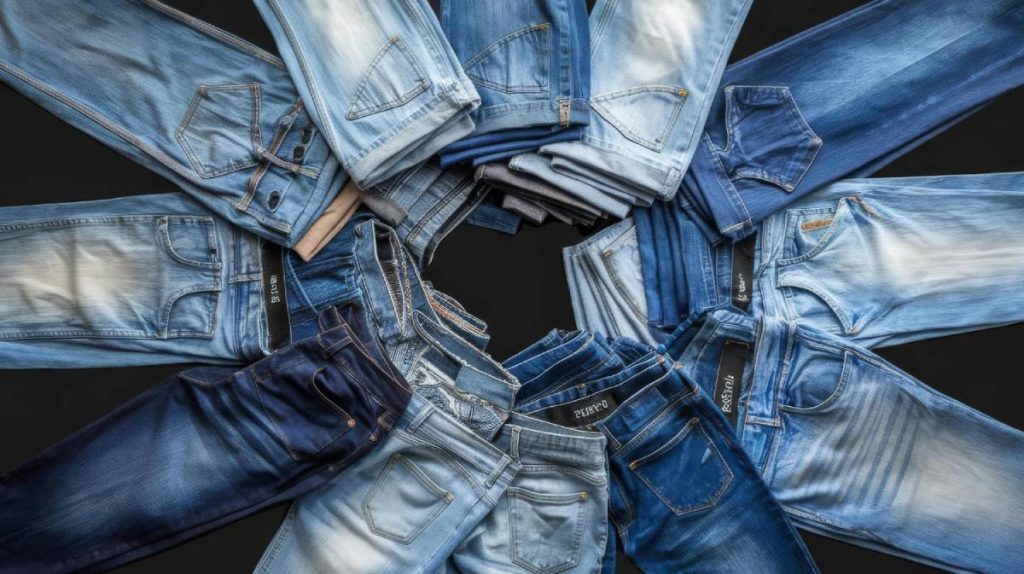Women Designing for Women represents a transformative movement in the UK high street fashion landscape, driven by an inspiring wave of female designers who are reshaping the industry. As celebrated names like Jacqui Markham and Clare Waight Keller take the reins at iconic brands, the focus is increasingly on creating fashion that resonates with women’s authentic experiences. This change not only enhances the representation of female perspectives within the fashion industry but also brings forth innovative women’s fashion trends that cater to real-life needs. High street brands, under the guidance of talented female creatives, are gaining traction, leading to their revival and relevance in a saturated market. With a renewed commitment to diversity and authenticity, Women Designing for Women is not just a trend but a vital step in the evolution of the fashion industry.
The initiative of female creatives crafting fashion specifically for women is gaining momentum, marking a significant evolution in today’s retail environment. This phenomenon can be seen as a response to the ongoing calls for greater diversity and representation within the fashion sector. Female designers are stepping into pivotal roles across top high street brands, bringing fresh perspectives that are vital for innovation in women’s apparel. As these talented individuals reshape fashion narratives, the emphasis on understanding women’s unique shopping habits and style preferences becomes paramount. Consequently, this shift not only enriches the product offerings but also fosters a deeper connection between brands and female consumers.
The Rise of Female Designers in the UK High Street Fashion Scene
In recent years, the presence of female designers on the British high street has surged, bringing with it a fresh wave of innovation and insight into women’s fashion. With influential figures like Jacqui Markham at Whistles and Maddy Evans leading the womenswear direction at Marks & Spencer, these trailblazing women are not just shaping products; they are redefining how brands connect with female consumers. The impact of these changes is evident in the growth of these brands, illustrating the power of women designing for women, which has become a pivotal element of their strategy in this fiercely competitive landscape.
The transformation in the high street fashion sector is notable, as more women take up prominent roles within major brands. This shift is fueled by a deeper understanding of customer needs, as female designers relate their lived experiences to create clothing that resonates with modern women. Clare Waight Keller’s appointment at Uniqlo exemplifies how high street brands are investing in diverse leadership to boost creativity and relevance. This movement not only highlights the importance of female voices in the fashion industry but also serves as a catalyst for broader discussions about diversity and representation within high fashion.
Impact of Female-Driven Leadership on High Street Brands
The new wave of female leadership in high street fashion has sparked a renaissance for several well-known brands. Under the guidance of skilled women like Karin Gustafsson at Cos and Michelle Wilson at Topshop, these companies have managed to innovate while honoring their roots. Their strategic focus on understanding what women want has shifted the narrative around high street fashion, propelling a generation of female-centric designs and products that truly cater to the modern consumer. Brands now recognize that having women in design and leadership roles allows for a more nuanced approach to product offerings.
As they reinvigorate brands that once struggled, these female leaders are often praised for their holistic understanding of the fashion industry’s complexities. This shift reflects a growing recognition that diversity within teams leads to innovative ideas and successful outcomes. The retail market has become increasingly saturated, compelling brands to differentiate themselves by tapping into the unique perspectives women bring to the table. As product director Camille Sullivan states, the lived experiences of female teams provide insights that enable brands to create compelling, relevant collections.
The Role of Viral Fashion Items in Brand Success
In an era where social media heavily influences fashion trends, the role of viral products cannot be underestimated. The success of brands like Uniqlo and Cos, as illustrated by their inclusion of popular items in the Lyst hottest products list, underscores the power of strategic marketing combined with clever design. Items such as Cos’s barrel leg trousers or Uniqlo’s affordable red socks become more than mere clothing; they symbolize a cultural moment and serve as a means of creating community among consumers. This trend has proven essential for brands looking to thrive in an over-saturated market.
Furthermore, the ability of items to go viral reflects the effectiveness of female designers who understand the pulse of women’s fashion trends. By creating pieces that resonate widely with fashion-conscious consumers, these designers ensure that their brands remain relevant to the demographic they cater to. The growth of online platforms reaffirms the crucial relationship between modern high street fashion and its ability to capture the interest of consumers through unique, shareable items. This dynamic has undeniably provided a fresh avenue for brands to engage and grow their customer base.
Navigating Nostalgia and Innovation in Fashion
The challenge of balancing nostalgia with innovation is vital for high street brands striving to maintain their relevance. As Joy Montgomery from Vogue notes, heritage should not be the sole driver of brand identity. Brands like Topshop, with a storied past, must move beyond nostalgia and embrace new ideas that reflect contemporary women’s needs. This calls for a blend of revisiting classic styles while injecting modern elements into their collections to appeal to current shoppers.
Innovative approaches can also involve leveraging archival designs alongside fresh concepts proposed by female designers, who understand that today’s consumers value authenticity and awareness. This new perspective allows brands to respect their heritage while appealing to a modern audience that demands functionality, style, and in some cases, sustainability. Female designers play a pivotal role in reshaping how these brands communicate their stories, ultimately leading them toward greater success in the evolving fashion landscape.
The Connection Between Diversity and Consumer Appeal
The narrative surrounding diversity in the fashion industry is shifting towards a more inclusive future, especially within high street brands. As brands recognize the necessity of reflecting the diversity of their consumer base, the appointment of women designers has emerged as a crucial strategy. Their unique experiences inform a more comprehensive understanding of market demands and consumer desires, allowing brands to resonate deeply with their target audiences.
Catherine Shuttleworth, a retail consultant, emphasizes that women are innately equipped to comprehend the intricacies of female consumption behavior. This insight not only shapes product design but also influences marketing strategies that genuinely connect with consumers. High street brands can leverage this connection to cultivate loyalty and lasting relationships while driving growth through inclusivity. As diversity becomes a priority, brands that embrace female leadership and innovative thinking are likely to find greater success in today’s competitive market.
High Street Brands Adapting to Change
As high street brands adapt to the changing landscape of the fashion industry, they must also confront the challenges of evolving consumer behaviors and market dynamics. The strategic incorporation of female leaders in roles such as creative directors and product managers signifies a crucial step toward a more responsive and adaptive business model. This change aids in establishing brands that are not only fashionable but also innovative and relevant to today’s consumers.
Companies like Marks & Spencer and Whistles are leveraging the expertise of women at the helm to guide their shifts in strategy, which aligns with contemporary fashion trends, thus enhancing their offering. This evolution is imperative as retail faces threats from e-commerce and fast fashion competitors. The emphasis on women’s insights fosters a culture of agility that allows high street brands to reimagine their product lines and marketing approaches, ensuring that they appeal to a diverse range of consumers.
The Future of Women’s Fashion Trends
Looking ahead, the future of women’s fashion trends is heavily influenced by the creativity and vision of female designers reshaping the high street. As they continue to emerge in prominent roles, we can expect a shift toward more personalized and relatable designs that speak to a broader audience. This strategy of innovative thinking among women not only serves to create intricate collections but also ensures that the technology and retail strategies of tomorrow are aligned with current consumer desires.
Moreover, the rise of women in leadership positions is redefining success within high street fashion. Female designers are increasingly focused on creating timeless styles that prioritize comfort, sustainability, and individuality, rather than just following fleeting trends. This approach elevates the conversation around women’s fashion, steering it towards a more thoughtful and conscious direction that resonates with today’s savvy consumers seeking value and purpose in their purchases.
Challenges and Criticisms Faced by Female Designers
Despite the positive momentum gained by female designers in the high street fashion landscape, they still face significant challenges and criticisms. Issues like underrepresentation in creative roles within major fashion labels create tension between the acknowledgment of their contributions and the realities of their positions. High fashion has been scrutinized for not promoting sufficient female talent in top roles, leading to a recognition of the need for consistent advocacy and support for women in the fashion industry.
Voices like Clare Waight Keller highlight the importance of balancing female-led designs with the risk of pigeonholing women into utilitarian roles. Such objections point to a larger conversation about creating opportunities that allow for authentic expressions of creativity without compromising diversity. The task ahead for the fashion industry is not only to appoint women but also to ensure that they are empowered to innovate and break away from traditional molds.
Collaboration and Innovation in High Street Fashion
Collaboration between brands and creative talents can serve as an essential catalyst for innovation in high street fashion. Female designers, accustomed to nurturing partnerships that promote creativity, are driving new collections that embody both their personal aesthetic and the brand ethos. By harnessing diverse perspectives through collaboration, these designers introduce exciting ideas and collections that can stimulate consumer interest and broaden appeal.
Moreover, cooperative efforts that involve women from various backgrounds foster an environment ripe for experimentation. This insightful exchange not only cultivates new trends in women’s fashion but also highlights the collective strength of female voices within the industry. As these collaborations form and gain traction, we witness a cultural shift that embraces inclusivity while empowering women, ultimately revitalizing the high street fashion scene.
Frequently Asked Questions
How are women designing for women changing the UK high street fashion landscape?
Women designing for women are reshaping UK high street fashion by bringing diverse perspectives that resonate with female consumers. With more female designers like Jacqui Markham at Whistles and Maddy Evans at Marks & Spencer, brands are focusing on understanding women’s everyday needs, leading to more relatable and appealing products.
What impact does the rising trend of female designers have on women’s fashion trends?
The trend of women designing for women contributes significantly to women’s fashion trends by incorporating authentic female experiences into designs. This results in products that not only reflect contemporary styles but also cater to functionality and comfort that women prioritize in their fashion choices.
Why is diversity among designers important for high street brands?
Diversity among designers enhances creativity and innovation, allowing high street brands to connect better with their customers. As noted by industry leaders, women designers bring unique insights into how women shop and think, which can lead to more successful and relatable product lines.
What brands are leading the charge for female designers in the high street fashion sector?
Brands like Whistles, Marks & Spencer, and Uniqlo are at the forefront of the movement of women designing for women. These companies have recently appointed talented female designers to key positions, recognizing the value of having women at the helm to create appealing collections for the modern female shopper.
How can high street fashion brands benefit from focusing on women designers?
High street fashion brands can benefit from women designers by improving product design that aligns with women’s needs, thus enhancing customer connection. By employing female talent, brands can craft more innovative, inclusive, and marketable fashion that resonates with a diverse female audience.
What challenges do women designers face in the fashion industry?
Despite the rise of women designing for women, challenges persist in the fashion industry, including a historical bias towards male designers in top roles. It’s essential for high street brands to avoid pigeonholing female designers into specific categories and instead embrace their full range of creativity.
How are high street brands like Uniqlo responding to the demand for women’s fashion trends?
High street brands like Uniqlo are responding to the demand for women’s fashion trends by hiring experienced female designers, such as Clare Waight Keller. This strategy allows them to create innovative collections that appeal to modern women, enhancing their market position amid changing consumer preferences.
What role does nostalgia play in the resurgence of high street brands like Topshop?
Nostalgia plays a significant role in reviving high street brands like Topshop, as many consumers fondly remember their past experiences. However, industry experts caution that brands must blend nostalgia with modern design to stay relevant, ensuring they can attract new customers while satisfying loyal fans.
What future prospects exist for female designers in high street fashion?
The future looks promising for female designers in high street fashion, as brands increasingly recognize the value of gender diversity. As the industry shifts towards more inclusive hiring practices and innovative design approaches, women in leadership roles are likely to drive significant changes in brand identity and consumer engagement.
How do high street brands ensure their designs reflect women’s needs?
High street brands like Whistles and Marks & Spencer ensure their designs reflect women’s needs by employing female designers who understand their target audience’s preferences and lifestyle. This enables brands to create relevant fashion that not only looks good but also meets practical requirements.
| Key Point | Details |
|---|---|
| Rise of Female Designers | Increasing appointments of female designers at high street brands. |
| Notable Appointments | Jacqui Markham at Whistles, Maddy Evans at Marks & Spencer, Clare Waight Keller at Uniqlo. |
| Consumer Trends | Viral products contributing to sales, such as Uniqlo’s socks and Cos’s trousers. |
| Diversity in Branding | Gender diversity in design and management teams, enhancing product relevance. |
| Nostalgia Factor | Brands like Topshop need to balance heritage with modern innovation. |
| Challenges Ahead | Risks of pigeonholing female designers in utilitarian roles. |
Summary
Women Designing for Women is reshaping the UK high street, providing brands with a fresh perspective that resonates with customers. As more female designers take on key creative roles, we see a revival of beloved brands like Whistles and a renewed focus on the consumer’s lived experiences. This evolution not only strengthens the connection between design and everyday needs but also encourages a more diverse approach to fashion. With innovations and a deeper understanding of women’s shopping behaviors, these changes highlight the importance of women leading the conversation in fashion, steering the future of the high street towards more inclusive and relatable offerings.



